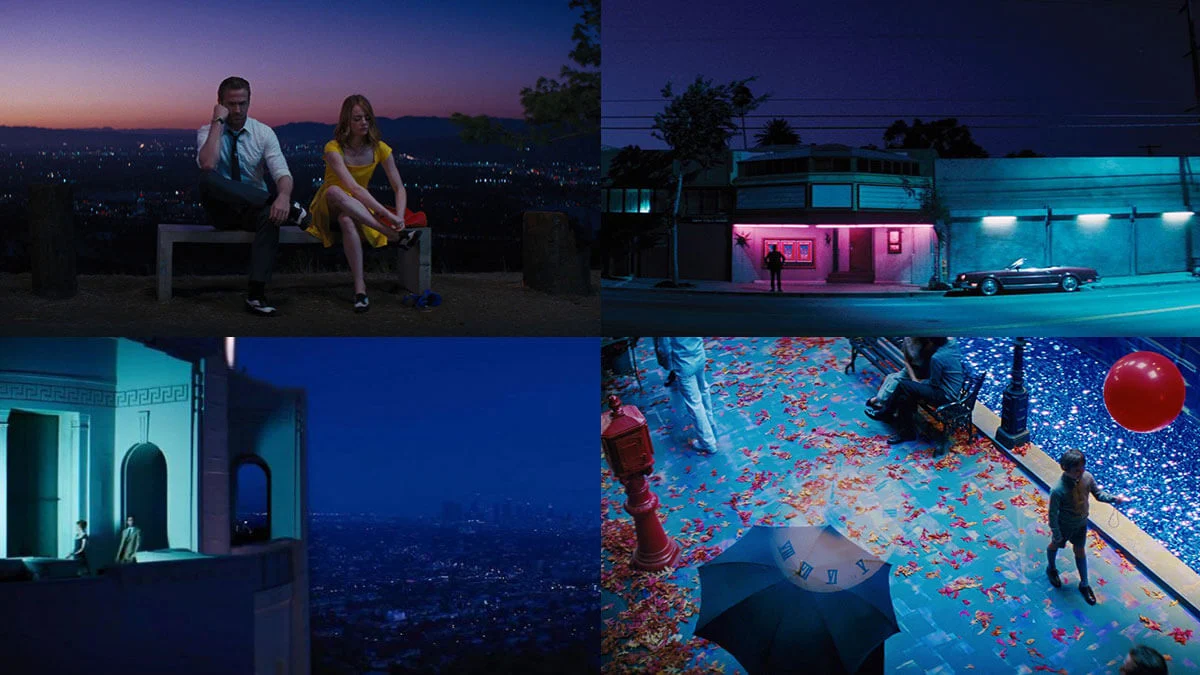The Art of Cinematography: Visual Storytelling in Film
 Teja Srinivas
Teja Srinivas
The Power of the Camera: How Innovative Shots Transform Movies
When you watch a movie, it’s easy to get swept up in the story, but have you ever stopped to think about how the camera work shapes that experience? Some of the most iconic moments in cinema history are thanks to innovative camera techniques that changed the way we watch movies. These techniques don’t just capture the action—they amplify the emotion, tension, and drama, turning simple scenes into unforgettable cinematic moments. From mind-bending camera angles to smooth tracking shots, the magic happens behind the lens.
The Art of the Tracking Shot
One of the most immersive camera techniques is the tracking shot, where the camera follows the action, giving you the feeling of being right there with the characters. Think of the long, continuous tracking shots in films like Goodfellas or 1917, where the camera moves seamlessly through the scene, pulling you into the story. This technique isn’t just a technical marvel—it’s a storytelling tool that builds tension, creates intimacy, and keeps you glued to the screen.
The brilliance of the tracking shot lies in its ability to make you feel like you’re part of the action. It’s like a dance between the camera and the characters, with the viewer caught in the middle, experiencing every moment in real-time. Whether it’s following a character through a bustling city street or down a quiet hallway, the tracking shot turns the ordinary into something extraordinary. It’s a reminder that sometimes, the best way to tell a story is to keep the camera moving.
The Impact of the Dutch Angle
Ever feel a little off-balance during a movie? That might be thanks to the Dutch angle, a camera technique where the frame is tilted, creating a sense of unease or disorientation. This shot is often used in moments of tension or chaos, making you feel as unsteady as the characters on screen. Directors like Tim Burton and Alfred Hitchcock have famously used the Dutch angle to give their films a unique, unsettling vibe.
The beauty of the Dutch angle is that it’s subtle yet powerful. It’s not a flashy technique, but it can completely change the mood of a scene. By tilting the camera, the director can make you feel uneasy, amplifying the emotional impact of the moment. It’s a great example of how a small change in perspective can make a big difference in how you experience a film. The next time you’re watching a thriller or horror movie, keep an eye out for this tricky little technique—it might just make your heart race a bit faster.
The Magic of the Dolly Zoom
If you’ve ever watched a scene where the background seems to stretch or compress while the subject stays the same, you’ve witnessed the magic of the dolly zoom. Also known as the “Vertigo Effect,” this technique, made famous by Alfred Hitchcock, creates a surreal, almost dizzying visual that’s perfect for moments of shock or revelation. It’s like a visual jolt, making you feel as disoriented as the character on screen.
The dolly zoom works by moving the camera toward or away from the subject while simultaneously zooming in the opposite direction. The result is a warped perspective that messes with your sense of space and reality. It’s a bold, in-your-face technique that demands your attention, making you feel the intensity of the moment. Directors use it sparingly because of its strong impact, but when they do, it’s unforgettable.
The Creative Power of Overhead Shots
Ever wondered what it’s like to see a scene from above, like a bird watching the action unfold? That’s the power of the overhead shot, a camera angle that gives you a god-like perspective of the scene below. Overhead shots are often used to show the layout of a location, highlight patterns, or convey a sense of isolation or vulnerability. Directors like Wes Anderson have mastered this technique, using it to create visually stunning and emotionally resonant moments.
The overhead shot isn’t just about showing you what’s happening—it’s about making you see it in a new way. By changing your perspective, this technique can add layers of meaning to a scene. It can make a character look small and insignificant or emphasize the order (or chaos) of a setting. It’s a simple yet effective way to give you a fresh view of the story, making you see things from a different angle—literally and figuratively.
The Future of Camera Techniques
As technology advances, so do the possibilities for innovative camera techniques. Drones, VR, and motion capture are just a few tools that filmmakers are using to push the boundaries of visual storytelling. The future is wide open, and with it comes the potential for new techniques that will continue to change the way we watch movies. Whether it’s a mind-bending new angle or a groundbreaking way to immerse you in the action, the camera will always be at the heart of cinematic innovation.
In the end, these camera techniques are more than just cool tricks—they’re powerful tools that enhance the storytelling experience. They change the way you see a movie, turning what could be a simple scene into something memorable, impactful, and emotionally charged. So next time you’re watching a film, take a moment to appreciate the artistry behind the lens—you might just discover a whole new level of appreciation for the magic of cinema.
Subscribe to my newsletter
Read articles from Teja Srinivas directly inside your inbox. Subscribe to the newsletter, and don't miss out.
Written by
